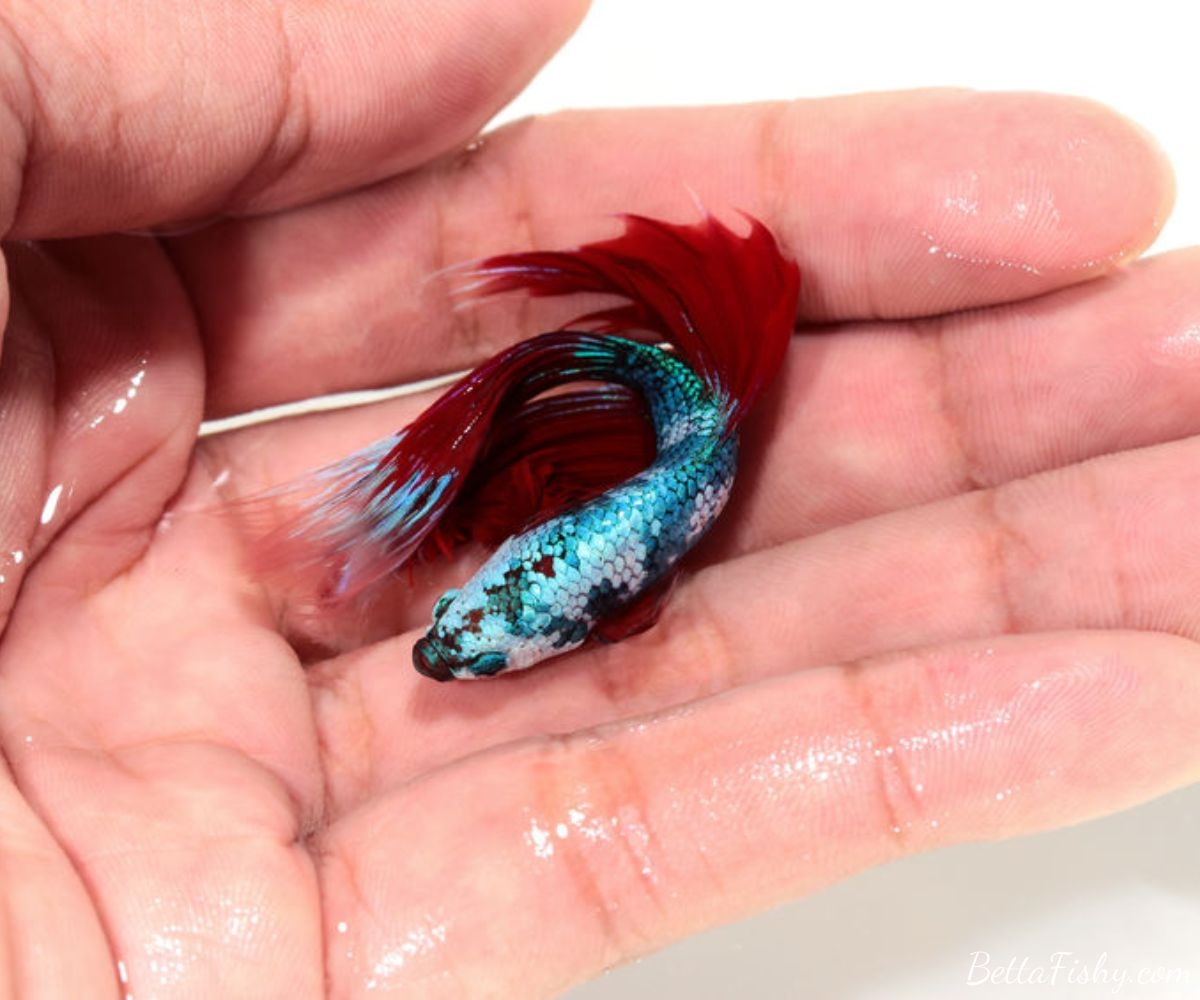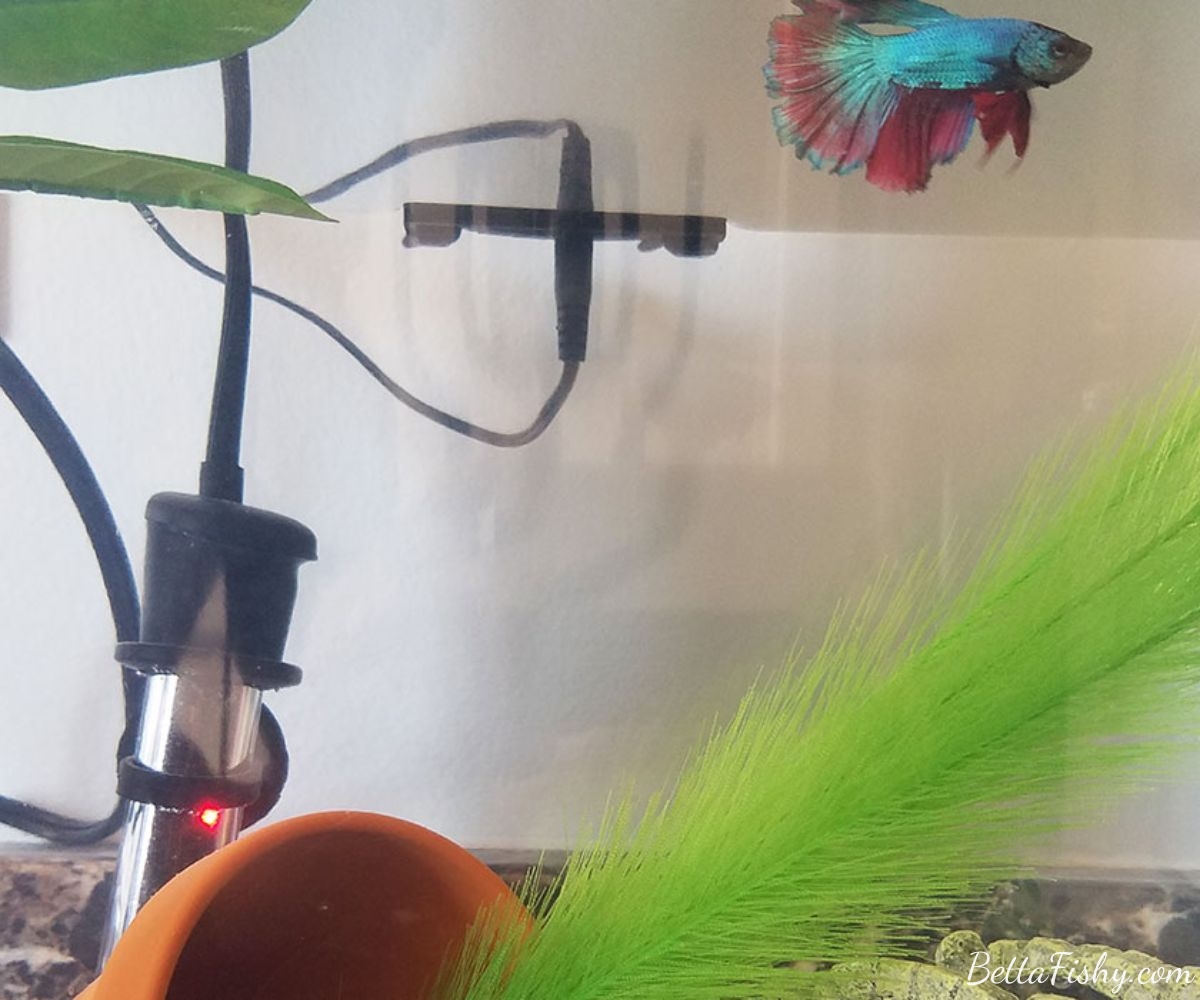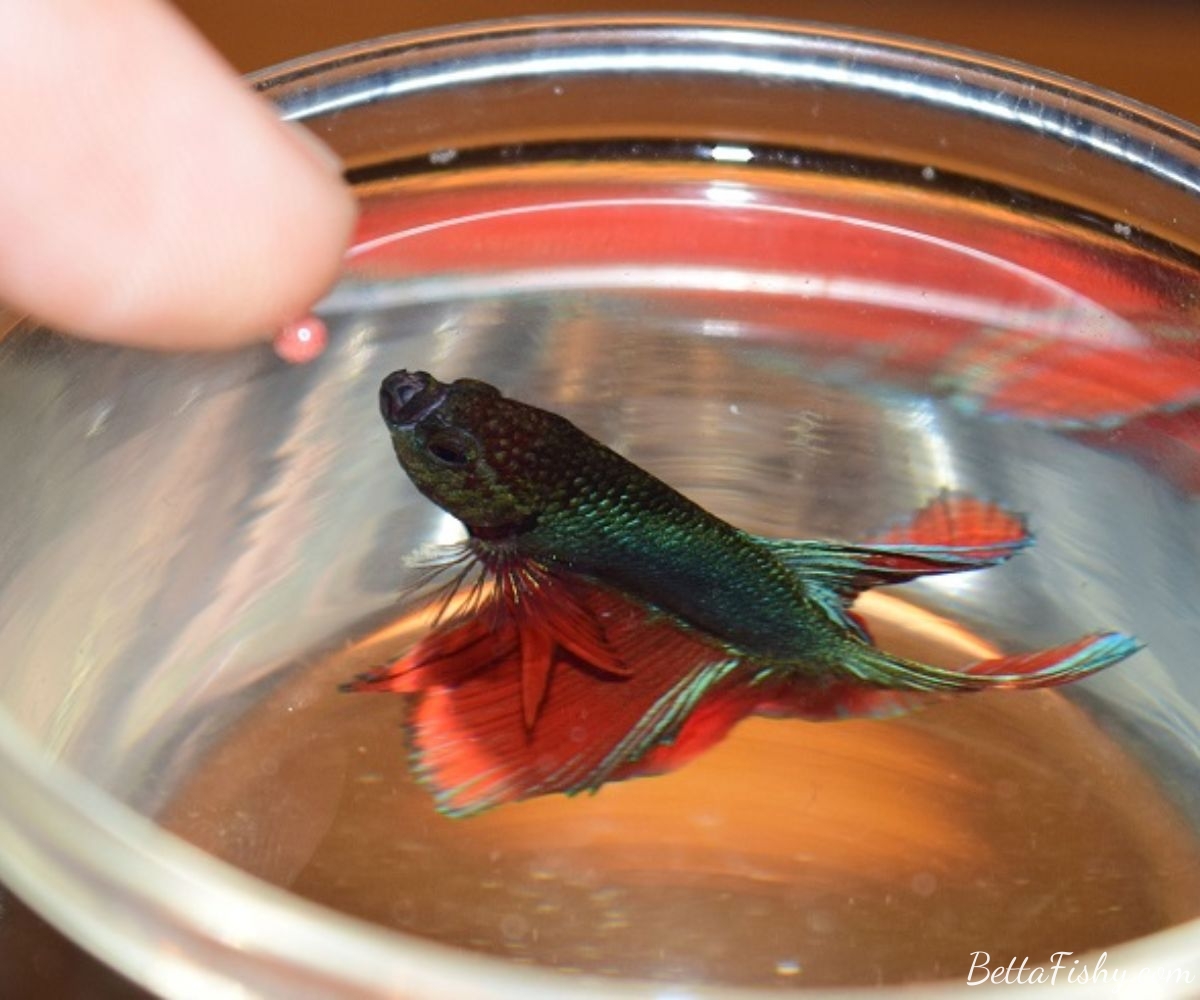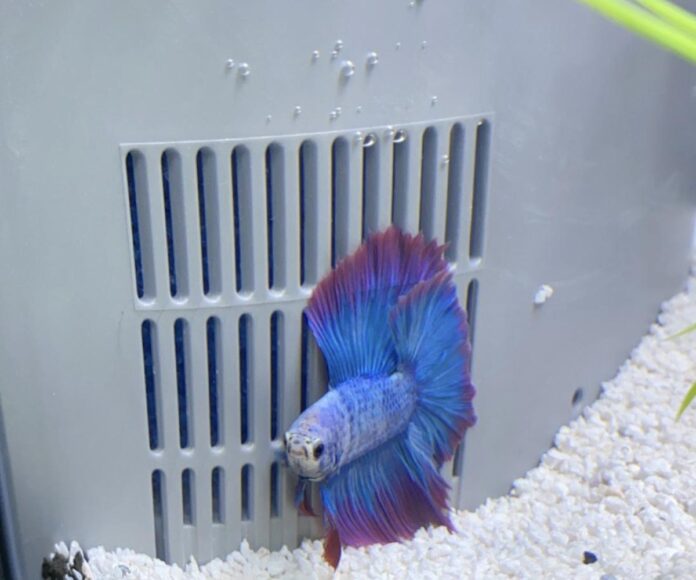Betta fish, also known as Siamese fighting fish, captivate aquarium enthusiasts with their iridescent scales and flowing fins. However, their inquisitive nature can occasionally lead them into trouble, a prime example being getting stuck to the filter intake. This can be a chilling and potentially fatal experience for both the fish and the owner. If your beloved Betta falls victim to this Betta Fish Getting Stuck to the Filter Intake predicament, this comprehensive guide by BettaFishy will navigate you through the crucial steps, covering immediate action, thorough assessment, preventive measures, and recovery care.
I. Betta Fish Getting Stuck to the Filter Intake! Immediate Action
The first and most crucial step is to immediately turn off the filter. This will prevent further harm to your betta fish and allow you to safely remove it from the filter intake. Once the filter is turned off, follow these steps:
1. Turn Off the Filter
As soon as you notice that your betta fish has gotten stuck in the filter intake, turn off the filter immediately. This will stop the suction and prevent any further harm to your fish.
2. Gently Remove the Fish
Carefully reach into the aquarium and gently remove the betta fish from the filter intake. Be cautious not to injure the fish further. If the fish is deeply lodged, you may need to use a soft, long-handled tool to gently dislodge it. It is important to act quickly but carefully in order to minimize stress and injury to the fish.
3. Check for Injuries
Once the fish is removed, inspect it for any visible injuries, such as cuts, abrasions, or fin damage. If you notice any injuries, consult a veterinarian or experienced aquarist for guidance on proper treatment. In some cases, the fish may have sustained internal injuries that are not immediately visible, so it is important to monitor its behavior and health closely in the following days.
II. Assessing the Situation

After taking immediate action to remove your betta fish from the filter intake, it is important to assess the situation and determine the cause of the incident. This will help you prevent similar incidents in the future and ensure the safety of your fish.
1. Investigate the Culprit: Identify the Type of Filter and Intake Design
The first step in assessing the situation is to identify the type of filter and intake design that caused the incident. There are various types of filters available in the market, such as hang-on-back filters, canister filters, and sponge filters. Each of these filters has a different intake design, which can vary in size, shape, and strength of suction. It is important to know the specific design of your filter in order to understand how your betta fish got stuck in the intake.
2. Consider the Cause: Was it Curiosity, Poor Swimming, or a Strong Current?
Once you have identified the type of filter and intake design, consider the cause of the incident. Bettas are naturally curious and may swim towards the filter intake out of curiosity. However, poor swimming skills or a strong current can also contribute to them getting stuck in the intake. Understanding the cause will help you take appropriate preventive measures.
3. Evaluate the Risk Factors: Analyze Tank Size, Flow Rate, and Overall Aquarium Setup
In addition to the type of filter and intake design, there are other risk factors that can contribute to your betta fish getting stuck in the filter intake. These include the size of your tank, the flow rate of your filter, and the overall setup of your aquarium. A small tank with a high flow rate can create a strong current that can be difficult for bettas to swim against. Similarly, a cluttered tank with limited resting spots can also increase the chances of your betta getting stuck in the filter intake. It is important to evaluate these risk factors and make necessary adjustments to ensure the safety of your fish.
III. Prevention Strategies

Now that you have assessed the situation and identified the risk factors, it is time to take preventive measures to avoid similar incidents in the future. Here are some strategies you can implement:
Adjust the Flow Rate
If you have a high flow rate filter, consider adjusting it to a lower setting. This will reduce the strength of the suction and make it easier for your betta fish to swim around without getting stuck in the intake. You can also add a flow control valve or baffle to your filter to regulate the flow rate.
Install a Pre-filter
A pre-filter is a mesh cover that goes over the intake of your filter, preventing small fish like bettas from getting sucked into it. You can purchase a pre-filter from your local pet store or make one yourself using a piece of mesh and a rubber band. Just make sure to clean it regularly to prevent clogging.
Provide Alternative Resting Spots
Bettas are known to rest on the surface of plants or other objects in their natural habitat. In an aquarium, they may try to rest on the filter intake if there are no other suitable spots available. To prevent this, provide alternative resting spots such as floating plants, broad leaves, or decorations near the surface of the water.
Ensure Proper Tank Size
As mentioned earlier, a small tank with a high flow rate can create a strong current that can be difficult for bettas to swim against. Therefore, it is important to provide your betta with a spacious tank that allows them to swim freely without facing any obstacles or strong currents.
IV. Recovery and Care for Fish

After going through the stressful experience of getting stuck in the filter intake, your betta fish may need some extra care and attention to recover fully. Here are some tips to help your betta heal and thrive:
Monitor Your Betta
Keep a close eye on your betta fish in the following days after the incident. Watch for any signs of stress, such as lethargy, loss of appetite, or unusual behavior. If you notice any concerning symptoms, consult a veterinarian for proper treatment.
Maintain Water Quality
It is important to maintain good water quality in your aquarium to promote healing and prevent any infections. Regularly test the water parameters and perform water changes as needed. You can also add a stress coat or aquarium salt to the water to help your betta recover.
Reduce Stress Factors
Stress can weaken your betta’s immune system and make them more susceptible to diseases. Therefore, it is important to reduce any stress factors in your betta’s environment. This includes keeping the tank clean, providing a suitable tank size, and avoiding sudden changes in water temperature or chemistry.
V. Conclusion
In conclusion, discovering your beloved betta struggling against the Betta Fish Getting Stuck to the Filter Intake can be a heart-stopping experience. But with swift action and preventative measures in place, you can safeguard your fish’s health and happiness. Remember: turn off the filter, carefully release the fish, and analyze the situation to identify potential triggers and risk factors. By adjusting the flow rate, installing a pre-filter, providing alternative resting areas, and ensuring an appropriate tank size, you can prevent future Betta Fish Getting Stuck to the Filter Intake incidents. Finally, closely monitor your betta’s recovery and provide supportive care to facilitate healing and a return to vibrant life. With these practices, you can enjoy the stunning beauty and companionship of your betta fish without the apprehension of them getting caught in the filter intake.


